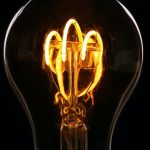Artificial Intelligence is transforming the learning, communication and knowledge presentation of the students. In electrical and electronics engineering it is a common thing where people feel that writing is a second thing since traditionally, things that were emphasized included circuits, devices and problem solving. However, as a matter of fact, writing ability is an essential component of a competent engineer. Writing and speaking articulately is the second most important skill whether it be the preparation of lab reports, circuit layout records and summaries of research reports. The use of writing tools powered by AI is changing, as the tools provide students with additional possibilities to streamline and enhance their writing allowing them to concentrate on the most important thing comprehension and application of the engineering concepts.
Why Writing Matters in Electrical Engineering?
Electrical engineers do much more than crimp wires or troubleshoot circuits. Their contributions have to be communicated, dissected, and even justified by accurate reporting. This begins with lab reports of experimental procedures and findings as a student. Even a small project such as a bridge rectifier test or a three-phase induction motor is not complete without a concise written report describing how the experiment was done and the meaning of the results.
Documentation produced by students when circuit design or a PLC is being programmed, makes it so that their work can be replicated in the future or in case of problems, it can be troubleshot. Research writings, project abstracts and final year project reports all require professional writing that portrays technical accuracy. Such habit extends to the corporate environment via project proposals, maintenance manuals and technical presentations. Good writing not only aids in achieving higher grades but also inspires communication with fellow students, managers, and eventual employers. Clarity of thought, which comes in form of a well-written report, is a skill that is highly treasured by employers.
Using Magic Write to Simplify Technical Writing
One of the most common challenges electrical students deal with is translating complex technical concepts into clear, readable text. Describing the working of a motor control system, explaining signal processing steps, or summarizing the function of a microcontroller can feel intimidating. This is where AI-powered tools like Magic Write can be a game-changer.
Magic Write is an AI paragraph generator from Canva that helps students convert ideas or prompts into structured, polished paragraphs. For e.g., an electrical student can input a brief description of their experiment on transformer efficiency and quickly receive a draft summary that can be refined into a complete lab report. The tool can also assist in preparing project abstracts, cover letters for internships, and simplified explanations of research findings.
Shifting the focus of the students from drafting, by using Magic Write as a starting point, students could save time and concentrate more on enhancing the technical precision of the contents. It performs the role of a writing assistant and assists in converting raw technical ideas into a professional text that can be included in reports, documentation of projects, and presentations.
Other AI Tools Electrical Students Can Benefit From
Although Magic Write is probably the best tool to convert ideas into structured text, there are other AI tools that can help electrical learners improve in writing and presentation. Grammarly is also popular as a tool to incorporate grammar, clarity, and scholarly tone into the report and research papers so that they sound professional. ChatGPT can help create study notes, brainstorm solutions to difficult concepts such as semiconductor switching or digital signal processing and explain theoretical constructs. Canva Docs is a very useful tool that enables students to incorporate AI-written text in their work including visual elements, including schematics, blocking diagrams, and project schedules, to produce presentations or final papers.
Together, these tools form a supportive ecosystem for students who want to write smarter while staying focused on the technical core of their studies.
Tips for Using AI Tools Responsibly
AI tools can be used to radically increase efficiency, but they must be used carefully. The rule is that one should always check technical accuracy. Texts can be written with the assistance of AI, although only the student himself/herself comprehends the circuit design or experiment performed. Use AI as an ally and not a tool that fills the gap of real education. The second rule is to utilize these tools to increase clarity and presentation as opposed to avoiding the work of comprehension. The integration of the AI-assisted course content, textbooks, and laboratory practice means that the student is not only providing well-edited reports but also enriching their understanding of electrical engineering science.
Responsible usage leads to smarter writing without sacrificing the knowledge and discipline that engineering demands.
Conclusion
AI-powered writing tools have opened a new era for engineering education. Electrical students who embrace tools gain a significant advantage in producing clear, professional, and well-structured content. By pairing these tools with technical expertise, they can transform lab reports, project documentation, and research summaries into impactful communication pieces that reflect their skills. Writing smarter with AI does not mean doing less; it means using technology to highlight what truly matters—understanding, clarity, and professional growth in the dynamic field of electrical engineering.






